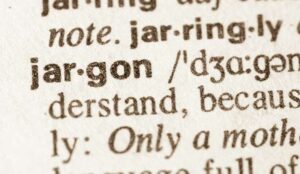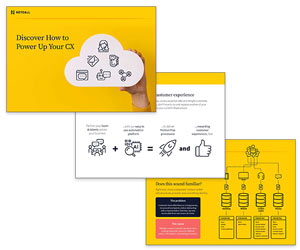Craig Willis at Netcall explores the key steps involved in conducting a time and motion study, breaking down how to observe day-to-day operations, identify bottlenecks, implement changes, and use ongoing analysis to refine business processes over time.
If you’re looking to improve your business and are ready to make fundamental changes in how you manage it, it’s time to consider running a time and motion study.
This technique helps identify inefficiencies, streamline workflows and improve overall performance. It will provide you with the information you need to assess your business and find where to improve it, based on that data.
But how exactly do you conduct a time and motion study? We’re here to help.
What is a Time and Motion Study?
A time and motion study is an evaluative analysis of industrial performance. In other words, it is used to study how much time goes into conducting certain actions in a business process.
Originally conceived for early 20th-century offices and factories in the USA, time and motion studies have since been adopted by a variety of industries.
The primary goal of a time and motion study is to maximise efficiency. By using measurable data when analysing business processes and looking for improvement spots, organisations can standardise their work processes and continuously improve.
Why Should Businesses Conduct a Time and Motion Study?
Conducting a time and motion study can help businesses in several ways:
- Identify inefficiencies: A time and motion study determines operational efficiency by finding tasks that take longer or more effort than they should. Understanding where time is wasted can help identify bottlenecks and optimise workflows.
- Improve productivity: By identifying areas of inefficiency, a time and motion study can improve productivity by highlighting areas of improvement.
- Reduce costs: By identifying and eliminating unnecessary processes, businesses can save money, reduce labour hours and optimise resource allocation.
- Enhance employee satisfaction: Make jobs easier and less stressful by removing unnecessary burdens.
- Support strategic decision-making: Time and motion studies provide a data-driven approach to process improvement, ensuring decisions are made without assumptions.
Step-By-Step Guide to Conduct a Time and Motion Study
Step 1: Study How Your Business is Currently Running
Having a full picture of what the day-to-day consists of is key to being able to make decisions. You can’t simply suggest changes without being aware of how things currently are, as you will not understand the impact they may have.
You’ll spend a lot of time watching how your team is doing things, how long it is taking them and how far they may be required to travel.
Some work-related questions that can help businesses identify where time is spent:
- How much time is spent on each task?
- What tasks take up the most time?
- Are there any tasks that frequently get delayed or postponed?
- How often do employees ask supervisors or peers questions?
- How long is the wait time or hold time while data is pulled up or the computer is refreshed?
- What is the number of phone calls or inquiries from others?
- Are employees spending time on non-essential or repetitive tasks?
Step 2: Find Bottlenecks or Trouble Spots For Improvement
Once you’ve understood how your business runs, you’ll see the bigger picture of your business processes, and you’ll be able to study them closely to see what’s working and not working. Anything that might be affecting efficiency will become more obvious.
Step 3: Conducting the Necessary Changes to Improve
Based on the bottlenecks or trouble areas you’ve found, you’ll take steps to try to fix them. Your goal will always be efficiency, so you may remove redundant steps or find ways to cut down travel time.
Step 4: Evaluate if the Desired Results Are Achieved
If you’re looking to reduce certain wait times, you will pay close attention to whether simplifying a sign-off process has a positive impact on wait times.
If it only impacts wait times for a short time and then goes back to normal, then you will want to assess why that is happening.
Step 5: Continue to Run the Study
Based on the results, continue improving to become even more efficient. You will find more and more ways to make the process better and save your team time and effort, either with the adoption of automation or with discovering new sourcing options, for example
Step-by-Step Guide to Conduct a Time and Motion Study
To implement a successful time and motion study, here are some best practices to follow:
- Get employees involved: Your employees may feel uncomfortable being observed. Explain the purpose of the study and how it benefits them. Seek their input and iron out any concerns before the study begins.
- Use technology: Use process mapping software, like Liberty Spark, to ensure that you can accurately visualise your processes and identify inefficiencies.
- Avoid micromanagement: The goal is to improve efficiency, not to monitor employees excessively.
Conduct regular reviews: Business needs change over time, so revisit your processes periodically.
This blog post has been re-published by kind permission of Netcall – View the Original Article
For more information about Netcall - visit the Netcall Website
Call Centre Helper is not responsible for the content of these guest blog posts. The opinions expressed in this article are those of the author, and do not necessarily reflect those of Call Centre Helper.
Author: Netcall
Reviewed by: Jo Robinson
Published On: 26th Aug 2025 - Last modified: 27th Aug 2025
Read more about - Guest Blogs, Netcall






 Netcall is trusted by organisations worldwide, with 9 out of 10 customers ready to recommend us. With Liberty Converse CX, you can streamline operations, enhance customer engagement, and achieve real, measurable results.
Netcall is trusted by organisations worldwide, with 9 out of 10 customers ready to recommend us. With Liberty Converse CX, you can streamline operations, enhance customer engagement, and achieve real, measurable results. 
































